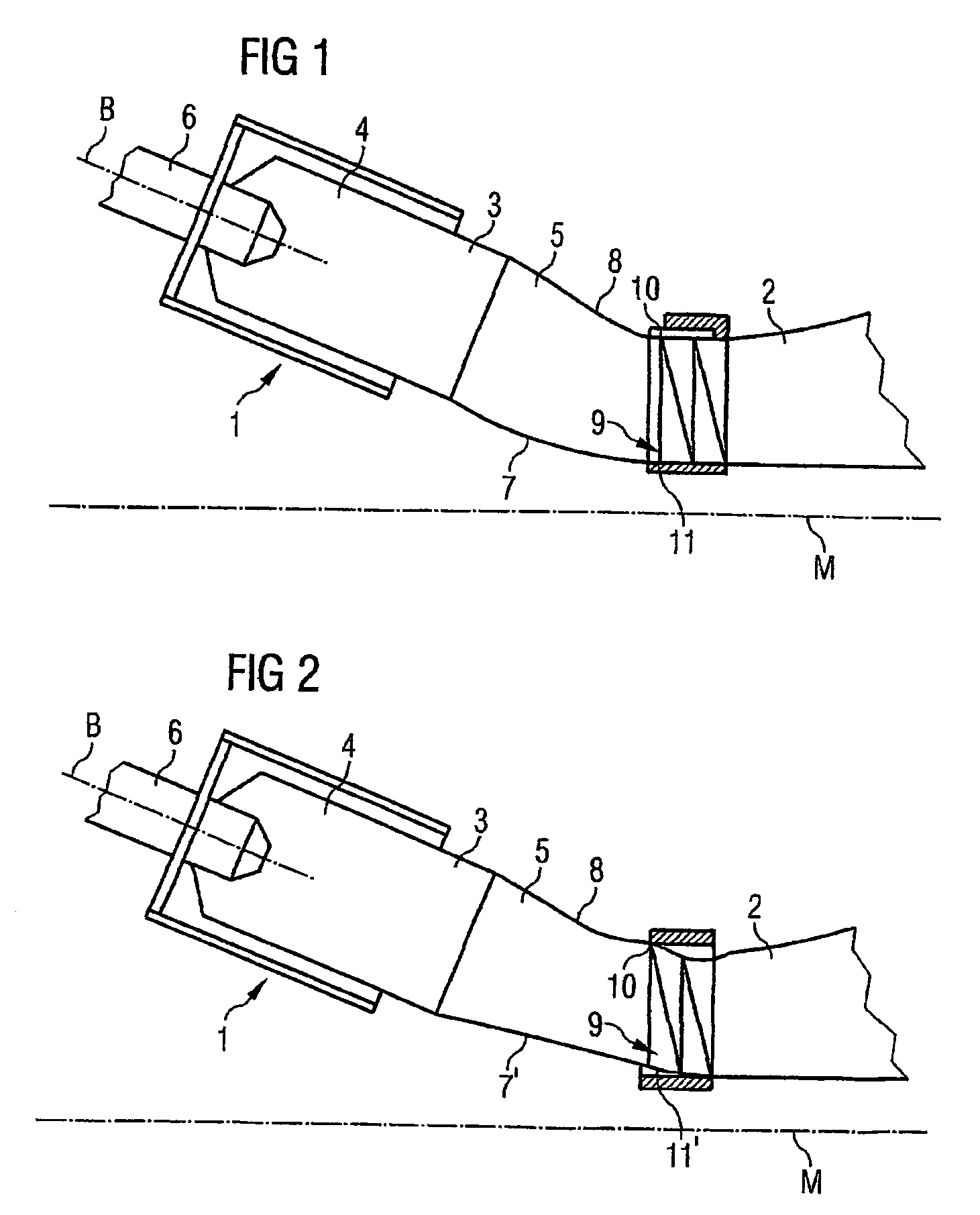Combustion chamber intermediate part for a gas turbine
a gas turbine and combustion chamber technology, applied in the direction of machines/engines, efficient propulsion technologies, lighting and heating apparatus, etc., can solve the problems of increasing mechanical and thermal loads, reducing the overall efficiency of the turbine, and steep temperature rise in the individual combustion chambers, so as to achieve the effect of lowering the cooling requirements
- Summary
- Abstract
- Description
- Claims
- Application Information
AI Technical Summary
Benefits of technology
Problems solved by technology
Method used
Image
Examples
Embodiment Construction
[0020]FIG. 1 shows a section of a turbine 1 in accordance with the invention in a first embodiment. In particular it shows an individual combustion chamber 3 in the transition to a turbine chamber 2 of the gas turbine 1. The individual combustion chamber 3 comprises an input section 4 and a transition section 5. The input section 4 is cylindrical with a circular base area; the transition section 5 changes the circular cross-section of the input section 4 in a cross-section with the form of a section of an annular segment. In the gas turbine 1 as per the invention there are a plurality of such individual combustion chambers 3 which on the output side of the transition sections 5 define an annular gap which leads to the turbine chamber 2.
[0021]Upstream of the individual combustion chamber 3 is a burner 6 which ignites a mixture of an oxygenated combustion gas and a fuel. Actual combustion then takes place in the individual combustion chambers 3 of the gas turbine 1, with resultant hot...
PUM
 Login to View More
Login to View More Abstract
Description
Claims
Application Information
 Login to View More
Login to View More - R&D
- Intellectual Property
- Life Sciences
- Materials
- Tech Scout
- Unparalleled Data Quality
- Higher Quality Content
- 60% Fewer Hallucinations
Browse by: Latest US Patents, China's latest patents, Technical Efficacy Thesaurus, Application Domain, Technology Topic, Popular Technical Reports.
© 2025 PatSnap. All rights reserved.Legal|Privacy policy|Modern Slavery Act Transparency Statement|Sitemap|About US| Contact US: help@patsnap.com


